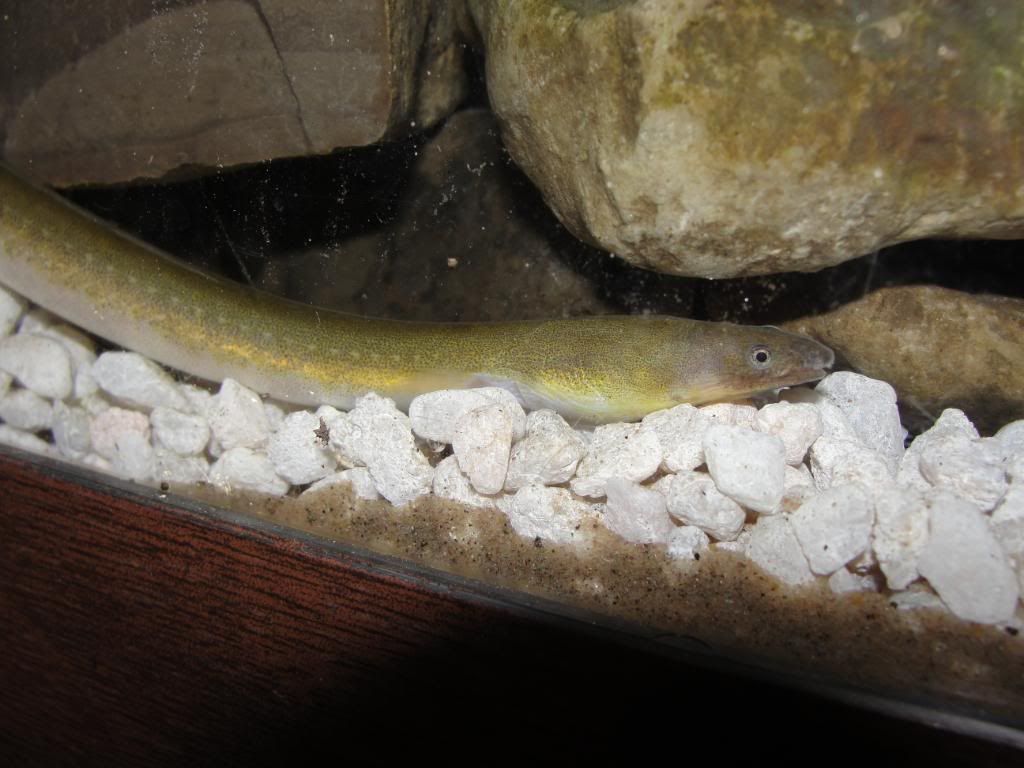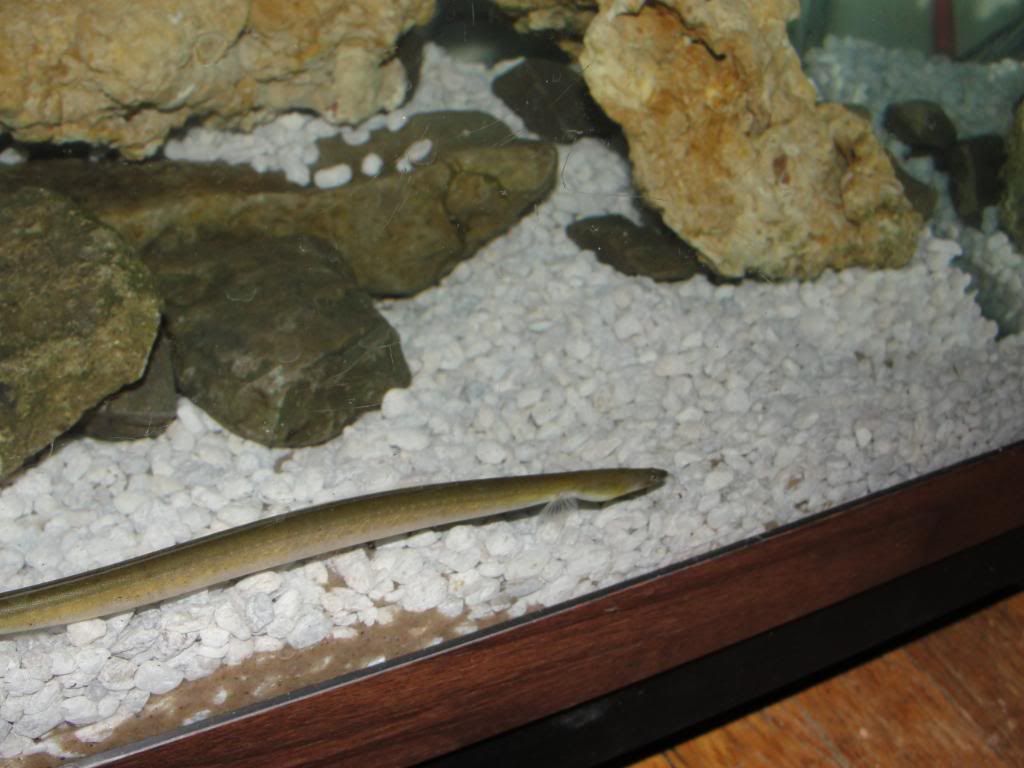I have an official id on my Eel finally. It is a snake eel/rice paddy eel( psindophis boro), it is very amusing to watch feed, it grabs hold of a fish and does barrel rolls while swallowing it. It also buries itself tail first with just his head sticking out of the sand.He is very active at night, and due to my lunar light system, I am able to watch him fairly easily. I have him in a 75 gallon Brackish tank. Here is some info I dug up on him.
Rice paddy eel is burrowing specialist 
Elvers of Pisodonophis boro are being sold as community fish.
Scientists have studied the morphology of the Rice paddy eel to determine why it is able to burrow either head- or tail-first.
Pisodonophis boro, a metre long eel from the family Ophichthidae, burrows into the substrate using either its head or its tail, and has a number of highly specialised feeding modes known as inertial feeding, grasping and spinning.
Schepper, Kegel and Adriaens of the Department of Evolutionary Morphology of Vertebrates at Belgium's Ghent University, claim that rotational feeding is a specialised mode seen in several elongate aquatic invertebrates, and often coincides with morphological modifications.
The team's study, which has just been published in the Journal of Morphology, involved a painstaking examination of the anatomy of Pisodonophis to determine how it was capable of feeding and burrowing in this manner.
The authors wrote: "The reduced eyes, covered with thick corneas may be beneficial for protection during head-first burrowing, but at the same time decreased visual acuity may have an impact on other sensory systems (e.g. cephalic lateral line system).
"The elongated and pointed shape of the skull is beneficial for substrate penetration. The cranial bones and their joints, which are fortified, are advantageous for resisting high mechanical loads during head-first burrowing.
"The aponeurotic connection between epaxial and jaw muscles is considered beneficial for transferring these forces from the body to the head during rotational feeding.
"Hypertrophied jaw muscles facilitate a powerful bite, which is required to hold prey during spinning movements and variability in the fiber angles of subdivisions of jaw muscles may be beneficial for preventing the lower jaw from being dislodged or opened.
"Furthermore, firm upper (premaxillo-ethmovomerine complex) and lower jaws (with robust coronoid processes) and high neurocranial rigidity are advantageous for a solid grip to hold prey during rotational feeding."
The scientists believe that the pointed shape of the tail and the skeleton in the caudal region are also beneficial for tail-first burrowing.
The eel has a reduction in the number of muscles in the tail region, because it no longer needs to use the caudal fin rays for subtle movements, as other fish species do.
The Rice paddy eel has been sold in the UK aquarium trade as an elver, where it normally advertised as the Glass eel.
The species reaches a length of around 1m/39" and lives in flooded fields, holes in the river bank and among rocks on the river bed.
It is a nocturnal predator and typically feeds on small to medium-sized fish and crabs.
Pisodonophis boro is found through much of the Indo-West Pacific, from East and South Africa to eastern India, Polynesia and Sri Lanka. It is found in marine, brackish and freshwater habitats.
Edited by NYnativekeeper716, 25 October 2009 - 09:07 AM.






 Elvers of Pisodonophis boro are being sold as community fish.
Elvers of Pisodonophis boro are being sold as community fish.